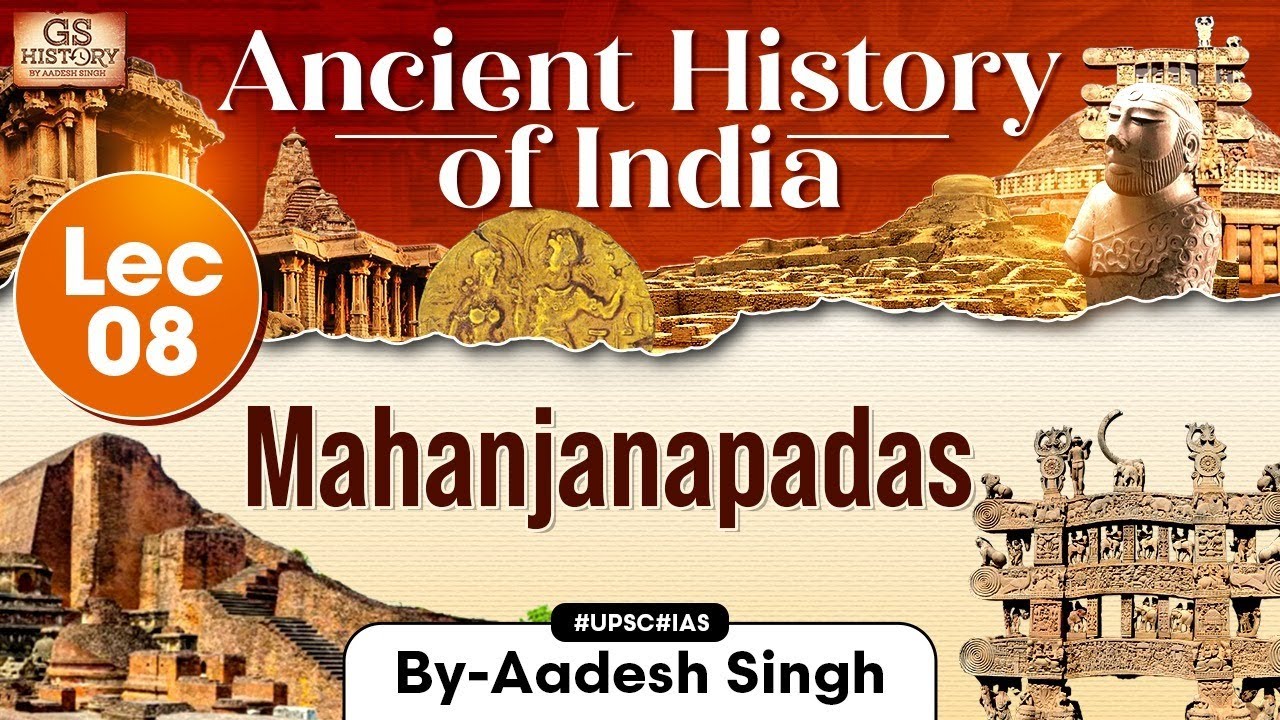Cultural Syncretism in Central Asia | World History | Khan Academy
Summary
TLDRIn this engaging exploration of South Central Asia around 280 BCE, David examines the interplay between the Mauryan Empire, the Seleucid Empire, and the newly established Greco-Bactrian Kingdom. He highlights the cultural syncretism resulting from these interactions, particularly evident in art and philosophy, such as the merging of Greek styles with Buddhist representations in the Gandara Buddha. Additionally, David discusses how Nestorian Christianity adapted to Chinese culture, emphasizing the significance of context in shaping beliefs. This synthesis of ideas showcases the rich tapestry of cultural exchange along the Silk Road, illustrating the transformative power of diverse influences.
Takeaways
- 🌏 The Mauryan Empire and the Seleucid Empire coexisted in South Central Asia around 280 BCE, with significant cultural exchanges.
- 🏛️ The Greco-Bactrian kingdom emerged from a satrapy of the Seleucid Empire, highlighting the region's historical importance.
- 📜 Cultural syncretism refers to the blending of cultural elements, ideas, and beliefs, prominently seen in Greco-Bactria.
- 🕌 Two representations of the Buddha from the 1st Century CE illustrate syncretism: aniconic representation and the standing Gandara Buddha in Greek attire.
- 🏺 The standing Gandara Buddha's Greek clothing reflects the influence of Hellenistic culture on Buddhist art in the region.
- 🚶 Buddhism spread along the Silk Road, facilitated by the Greco-Bactrian kingdom, connecting India to Central Asia and beyond.
- 🧠 The interaction between Greek philosophers and Indian Gymnosophists showcases a rich exchange of philosophical ideas.
- ✝️ The Nestorian Stele, erected in Tang China, represents the adaptation of Christianity to Chinese culture through syncretism.
- 🔄 Nestorian missionaries contextualized Christian principles using Buddhist and Daoist terminology, illustrating cultural integration.
- 🔍 Understanding these cultural dynamics enhances our comprehension of historical exchanges and transformations.
Q & A
What were the two main empires discussed in the video, and what areas did they occupy?
-The two main empires discussed are the Mauryan Empire and the Seleucid Empire. The Mauryan Empire encompassed the Indus River Valley, located in present-day Pakistan, while the Seleucid Empire occupied areas that are now parts of Asia Minor and Central Asia.
What significant event occurred in 250 BCE involving the Seleucid Empire?
-In 250 BCE, a satrapy of the Seleucid Empire called Bactria seceded and fought a war of independence, establishing itself as the Greco-Bactrian kingdom.
How did the region of Greco-Bactria influence cultural syncretism?
-Greco-Bactria was a melting pot of Hellenic and Indian influences due to its historical context of being passed between Indian and Macedonian powers, leading to a blending of cultural objects, ideas, and faiths, known as cultural syncretism.
What is cultural syncretism, and how is it illustrated in the context of Buddhism and Greek culture?
-Cultural syncretism is the mixing of cultural elements from different backgrounds. It is illustrated in Buddhism through representations like the standing Gandara Buddha, which depicts the Buddha in Greek clothing and style, reflecting the integration of Hellenic aesthetics with Buddhist philosophy.
What is an aniconic representation of the Buddha, and how does it differ from physical representations?
-An aniconic representation of the Buddha is a symbolic depiction that does not show the Buddha in human form, such as the Buddha's footprint. This contrasts with physical representations, like the standing Gandara Buddha, which shows the Buddha in a recognizable human shape.
What role did the Silk Road play in the spread of Buddhism from Greco-Bactria?
-The Silk Road facilitated the spread of Buddhism from Greco-Bactria to various oasis cities in Central Asia and ultimately into China, allowing for cultural exchange and the dissemination of Buddhist philosophy.
How did the Nestorian Stele reflect syncretism in its description of Christianity?
-The Nestorian Stele, erected in 781 in Chang'an, reflects syncretism by adapting Christian concepts using Daoist and Buddhist terminology to connect with the local Chinese population, thus making Christianity more relatable to them.
What were the 'Gymnosophists,' and what was their significance in the context of the interaction between Greek and Indian philosophy?
-The Gymnosophists were Indian philosophers who lived during the time of Alexander the Great. They were significant because they engaged with Greek thinkers, influencing Greek philosophy with their ascetic practices and thoughts on knowledge and wisdom.
What specific Buddhist concepts were used to describe Christ in the Nestorian Stele?
-In the Nestorian Stele, Christ is described using concepts from Mahayana Buddhism, including the 'eight boundaries' and 'the three constant principles,' which refer to impermanence, suffering, and non-self.
What does the term 'syncretism' encompass in the context of the video?
-In the video, syncretism encompasses the blending of different cultural, philosophical, and religious ideas, as seen in the interactions between Buddhism, Greek culture, and Nestorian Christianity, where each tradition influenced and adapted elements from one another.
Outlines

Этот раздел доступен только подписчикам платных тарифов. Пожалуйста, перейдите на платный тариф для доступа.
Перейти на платный тарифMindmap

Этот раздел доступен только подписчикам платных тарифов. Пожалуйста, перейдите на платный тариф для доступа.
Перейти на платный тарифKeywords

Этот раздел доступен только подписчикам платных тарифов. Пожалуйста, перейдите на платный тариф для доступа.
Перейти на платный тарифHighlights

Этот раздел доступен только подписчикам платных тарифов. Пожалуйста, перейдите на платный тариф для доступа.
Перейти на платный тарифTranscripts

Этот раздел доступен только подписчикам платных тарифов. Пожалуйста, перейдите на платный тариф для доступа.
Перейти на платный тарифПосмотреть больше похожих видео

The Hellenistic Age | Facts You Should Know

The Maurya Empire: The Mightiest Civilization India Has Ever Known

SEJARAH KERAJAAN SRIWIJAYA

Ancient History of India Series | Lecture 8: Mahanjanapadas | GS History by Aadesh | UPSC

STORIA EGIZI (ANTICO MEDIO E NUOVO REGNO) - riassunto egizi 1°superiore

Sinaunang Kabihasnan ng Timog Silangang Asya Quarter 1 Week 6 #matatag
5.0 / 5 (0 votes)
